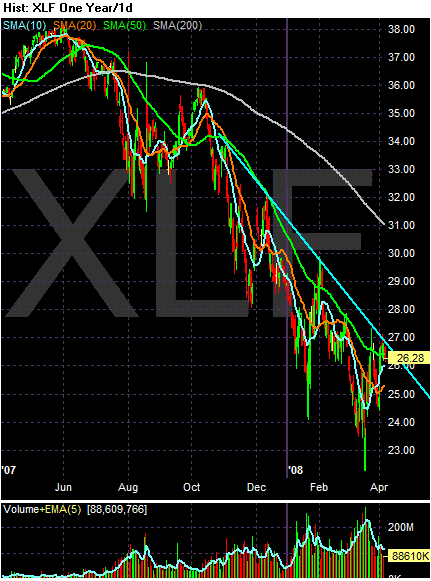Private-equity firm TPG and other investors are close to a deal to invest $5 billion in Washington Mutual Inc., people familiar with the matter said Sunday.
The injection of new capital would allow the country's largest savings and loan to ease its pressing capital requirements, the people said, amid punishing losses from the national mortgage crisis. But it would substantially dilute current WaMu shareholders, who have already lost 74% of their investment over the past year. WaMu's market capitalization on Friday was just under $9 billion, after its shares dropped 11% that day.
The planned investment marks a humbling hand-in-hat moment for the 119-year-old Seattle stalwart. Having parlayed the country's housing boom to a nationwide reputation and immense profits, it is now paying dearly for delving into subprime mortgages.
There is good and bad news here.
The good news is people are still willing to put money into the financial sector.
The bad news is one of the largest financial institutions in the country has to raise capital. And we're not talking about chump-change -- we're talking about $5 billion. That explains the following:
The Federal Deposit Insurance Corp. plans to hire as many as 138 new employees to help deal with the potential for rising bank failures amid the current financial morass.
An agency spokesman said the FDIC hopes to boost the number of employees in its Division of Resolutions & Receiverships to as many as 380 from the current 223. The division is already authorized to have 242 employees, so the new hiring effort will seek to add an additional 138 new positions, half of whom will be temporary hires. "We're offering reassurance that we'll be prepared," spokesman Andrew Gray said.
The bottom line is we can expect to hear news of this sort for the next year at least. As firms in the financial sector continue to writedown the value of their sub-prime holdings there's going to be a continual need for fresh cash from the sidelines.
This is the type of news that will continue to hurt the financial sector for the upcoming year (at least). Let's go to the charts.

On the six month financial sector chart, notice the following:
-- We are in a clear pattern of lower lows and lower highs -- a classic bear market formation.
-- There is a clear downward sloping trend line connecting the tops of the upward moves over the last 5 months or so.
-- The chart is 15.22% below the 200 day SMA.
-- Notice the importance of the 50 day SMA. Prices have used this line as important upside resistance four times in the last 6 months.,
-- Also notice the almost predictable nature of the 10 and 20 day SMAs. The 10 day SMA moves through the 20. When this happens, the 10 day SMA is in positive territory, and this move through the 20 day SMA starts to pull the 20 day SMA into positive territory. But after this happens, prices move below all of these SMAs pulling them all lower (again).
Simply put, there is going to continue to be a tug of war among investors in this sector for the foreseeable future. The downward pull is very strong as news of writedowns mounts. But there is also some hope as capital infusions indicate that investors see long-term potential in the sector.